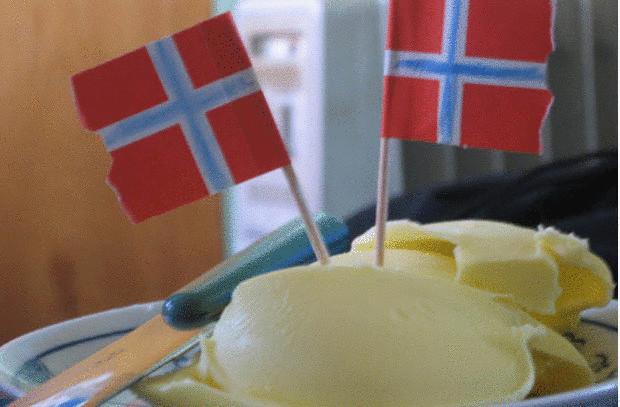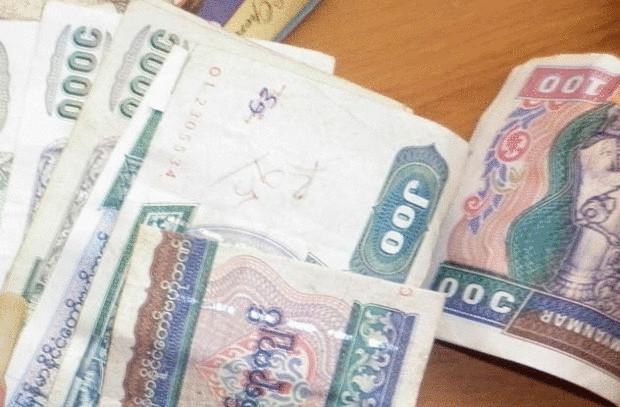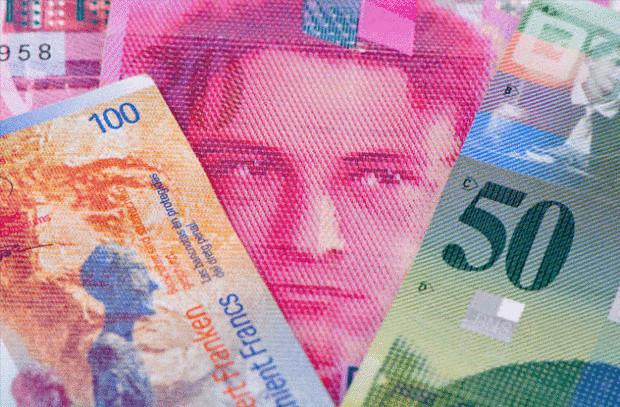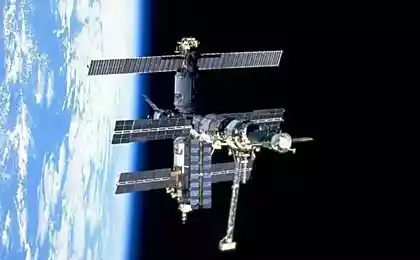513
Curious problems touching the whole States
1. The Norwegian "oil crisis"

The Norwegian "oil crisis" of 2011 year is a very bad combination of decreasing supply and increasing demand. The demand for oil began to grow in the summer, in October it has already increased by 20%, and in the following month by 30%. At this rate, by mid-December, with Christmas coming, the price for a package of oil increased to 300 kroons, or $ 50. The ones that had oil, were taken advantage of. People began to sell oil on the Internet auctions, the going rate which was $ 100 per 450 grams of oil. Abroad, in the Swedish supermarkets, began to notice that sales of oil jumped by 2000%, and all of these sales was observed when supermarkets were visited by the Norwegians. Then was caught by a pair of Swedes who tried smuggling the import to Norway of 250 kg of oil. In addition, subsequently, the retail sellers for their losses began to demand compensation in the amount of $7 million.
2. Panic because the toilet бумаги
In December 1973, the year johnny Carson was scared of the Americans, referring to looming over the country's shortage of toilet paper. Gullible consumers immediately rushed to the shops, and some stores immediately took advantage of the situation, raising prices on paper. Fortunately, the crisis was gone the very next night when Carson is on the radio explained that it was only a joke. However, this was not the only problem in 1973, the year associated with toilet paper. On the other side of the Pacific ocean, the Japanese government was concerned about the Arab-Israeli war, because Japan is very much dependent on middle Eastern oil. One of the Japanese Ministers on the 31st of October, went on television and asked the Japanese have used toilet paper is more economical. It was probably the worst thing he ever did.
The next day, several hundred people lined up near the supermarket in Osaka, and I bought up all the toilet paper. When this came out in the news, example Osaka, followed by other Japanese cities. Another official of the 2nd November, asked people to calm down, assuring them that paper in the country a lot. However, it was still trying to put out the fire. People began to hoard as much paper as I could. By the end of the crisis, the majority of Japanese were provided with toilet paper for years to come.
3. The shortage of meat in Америке
The shortage of meat in America in 1910, the year arose due to the decline in populations of native animals and due to a too rapidly growing population. The lack of meat in the United States in itself is quite unusual, but here it is necessary to tell about the original plan to resolve the crisis.
The two men had a dream: to meet the national appetite, creating a farm hippos in Louisiana. Louisiana, in turn, had its own problem: Japanese water hyacinth, came to the country during the exhibition of cotton, began to grow, and clog waterways. Congressman Robert Broussard learned about the idea of breeding hippos from Explorer Frederick Barney, who also assured that the hippos would eat water hyacinth. For this to happen, the Congressman passed a bill with a value of 250000 $.
But the Ministry of agriculture believed that the beef would be a much better solution to the "meat crisis". They decided to increase the area of land on which it is possible to breed cattle. In the "extensions" were many swamps, in which it was planned to breed hippos. However, the idea of eating hippos for a long time remained popular in the 60-ies, and in the magazine "Popular science" about the meat of these animals has been described as "incredibly delicious and a little fatty". However, it is for some reason not helped to solve similar food shortages in North Africa.
4. Paranoia in Myanmar due to наличных
Myanmar is a country that desperately needs economic development. And yet it is a country where almost no one will trust the banks, and even fewer people out there willing to trust the ATMs. Actually, ATMs in this country it was not until 2013. For a long time, the international sanctions imposed because of the military dictatorship in Myanmar, just do not allow companies Visa and MasterCard establish branches. The banks were terribly corrupt, and people often had to bribe officers just to pick up from the Bank's own money.
As a result, less than 10% of the population of Myanmar has its own Bank account. People just don't bring to the Bank their cash. But the problem here is much deeper. The fact that the Myanmar people is acceptable cash only in perfect condition. Any crease, a drop, a stain of ink on the bill, and people just stop paying attention to this bill. And to smooth bills, people kept them in books. The country has transitioned to democracy, there is now literally trying everything to make people finally started to use the banking system. Some signs of progress are evident, however, the path that the country ahead is still very long.
5. Hyperinflation in Венгрии
Perhaps the inflation is a common problem of many States. But hyperinflation is much rarer. In the 20-ies of the last century, inflation in Germany has reached a historic high and amounted to 32,400% in one month. And the hyperinflation that occurred in Hungary in 1946-m to year, it is something out of the ordinary, because she was a trillion times bigger "Weimar inflation" in Germany.
It all began in 1945-m to year, and the peak of the Hungarian hyperinflation occurred in 1946-the year, when prices doubled every 15,6 hours. In January 1946, the government had replaced the Hungarian PENGO to another currency, adopengo, which cost several trillion PENGO. Original PENGO also remained in circulation, and its value continued to fall until, until it became impossible to get something with even stabellini PENGO accounts. The number of completely useless Bank accounts continued to grow. By the end of the crisis, each unit of national currency in circulation was worth less than one U.S. cent. On 1 August 1946, the year the Hungarian government introduced the Forint, the cost of which was equivalent to 400000000000000000000000000000 PENGO. The new national currency backed by gold and foreign money, and she was stable enough to survive until the present day.
6. Too good economy Швейцарии
With the beginning of the financial crisis in 2008-m to year, each country had to struggle with the demons in their own economy. One of the countries that handled the crisis extremely well, was Switzerland. Around when Switzerland began to break down the Eurozone, the Swiss economy still maintained a low level of national debt, low unemployment, and excellent level of exports.
The presence of Switzerland's most flexible economy on the continent, maybe, and not look like a problem. However, Switzerland is still part of a huge world, and the world made the country a victim of its own success. Currency traders in search of safe investments began to move on the Swiss franc, and its value increased by 30% compared to the Euro. Overvalued franc has made Swiss exports much more expensive, and many Swiss companies suffered losses. The result of a rise in price of franc there are other negative consequences, for example, greatly increased the real value of fixed debt citizens. The government should artificially reduce the value of the national currency, then perhaps they would have avoided the current situation. However, the control value of the currency in Switzerland was as bad as in Europe.
7. Panic because членов
The Koro syndrome is a mass delusion in which people believe their genitals gradually shrink, or that the genitals had been stolen. In several African countries, this syndrome has gripped several towns and villages. There are entire groups of men claimed that their members are compressed. They were attached to their genitals laces or metal clips in order to delay the genitals until, until you find the desired shaman.
In the theft of genitals are often accused sorcerers. In 2008-m to year in the Congo arose rumors that people who jingle gold in a taxi, steal a member of his companions. It even began to speak on local radio. And it turned out that the panic over the vanishing of the members was not the biggest problem. A much more serious problem was the public reaction. Congo police had to arrest 13 people suspected of "witchcraft" and found the bodies of 14 people who, presumably, were killed, "victims of witchcraft".
It was probably a sensible precaution. In a similar episode in Ghana, in 1990-m to year, was 12 "kidnappers members of" that an angry mob beat to death. In Nigeria 12 people were killed in 2001-m to year, and in the same year, 5 people were killed in Benin.
The chief of police of the Congo said: "When you're trying to prove to the victims that their members still on the ground, they begin to prove to you, that's all there was tiny or that they've become impotent. To which I replied how do you know if did not go home, and don't try"?
8. Korean crisis кимчи
In South Korea there is no food more important than kimchi. This dish of sauerkraut has almost religious status. Kimchi is served with every meal. In restaurants, this dish is free, like ketchup in the United States. So when the price of the main component of this dish, cabbage NAPA, has increased by almost 500% within one month in 2010 year, it has become a huge problem. Initially, the value of kimchi sharply jumped up, and then it was a period of deficit. The Newspapers called it "a national tragedy" and "crisis of the century".
The deficit came along with torrential rains, combined with a little of last year's harvest of cabbage. As a result, people started to steal the cabbage. In one of the provinces was arrested by a group of people who tried to escape with 400 heads of cabbage. My usual sauce the Koreans started to call "Keum Chi" and "kaum" translated from Korean means "gold". The government froze the growth of tariffs on the import of radish and cabbage. In order to demonstrate solidarity with the people, the President of South Korea said it began there is only a second-rate cabbage imported from the USA and Europe.
9. Operation "Pig bristle"
The housing crisis is a global problem. He is in the UK, and there is no hope to solve it soon. The same applies to Australia, which, like Britain, was in no hurry to build a sufficient number of affordable housing in recent decades. In 1944, the year the Australian government approved the construction of new buildings in order to meet the ever growing demand for housing. And then there was a very unusual problem: a chronic shortage of paintbrushes. And moreover there has also been a chronic shortage of pig bristles, used to make brushes, and the only major source of which was China.
China at that time was engulfed in civil war. So import from there was seriously hampered. In the result the Royal air forces of Australia received an order to buy 20 tons of pig bristles from Chongqing. The mission was launched in may, and it was good: operation "Pig bristle". To finish the job, the military took 5 months.
10. The shortage of laboratory мышей
May 10, 1989, the year at the Jackson Laboratory, in Maine, there was a fire. The fire destroyed a facility for breeding of laboratory animals, and it killed 400000 laboratory mice. Among them were unique and very unusual specimens that were used by scientists to study thousands of diseases, including HIV and some cancers. The destroyed building was supplied mice 6500 research laboratories of the United States. Members of the lab considered what happened a fire a real "national disaster". Many experiments carried out at the time of the fire, had to stop because mouse from another vendor would greatly distort the results of these experiments. The Mayo clinic, which was among the affected institutions, was forced to postpone the tests for testing new drugs for arthritis. The fire has affected medical researchers worldwide, as laboratory weekly sold 40000 11200 mice in laboratories around the world.
Losses incurred by the Jackson Laboratory, have reached $40 million.
Their insurance was able to cover only 15 million $ of total losses. Despite the fact that the Jackson Laboratory has received numerous donations, including 750000 $ from the Medical Institute of Howard Hughes, the lab has asked Congress for US $ 25 million for an early resumption of the national medical research.
P. S. And remember, only by changing their consumption — together we change the world! ©
Source: /users/1080

The Norwegian "oil crisis" of 2011 year is a very bad combination of decreasing supply and increasing demand. The demand for oil began to grow in the summer, in October it has already increased by 20%, and in the following month by 30%. At this rate, by mid-December, with Christmas coming, the price for a package of oil increased to 300 kroons, or $ 50. The ones that had oil, were taken advantage of. People began to sell oil on the Internet auctions, the going rate which was $ 100 per 450 grams of oil. Abroad, in the Swedish supermarkets, began to notice that sales of oil jumped by 2000%, and all of these sales was observed when supermarkets were visited by the Norwegians. Then was caught by a pair of Swedes who tried smuggling the import to Norway of 250 kg of oil. In addition, subsequently, the retail sellers for their losses began to demand compensation in the amount of $7 million.
2. Panic because the toilet бумаги

In December 1973, the year johnny Carson was scared of the Americans, referring to looming over the country's shortage of toilet paper. Gullible consumers immediately rushed to the shops, and some stores immediately took advantage of the situation, raising prices on paper. Fortunately, the crisis was gone the very next night when Carson is on the radio explained that it was only a joke. However, this was not the only problem in 1973, the year associated with toilet paper. On the other side of the Pacific ocean, the Japanese government was concerned about the Arab-Israeli war, because Japan is very much dependent on middle Eastern oil. One of the Japanese Ministers on the 31st of October, went on television and asked the Japanese have used toilet paper is more economical. It was probably the worst thing he ever did.
The next day, several hundred people lined up near the supermarket in Osaka, and I bought up all the toilet paper. When this came out in the news, example Osaka, followed by other Japanese cities. Another official of the 2nd November, asked people to calm down, assuring them that paper in the country a lot. However, it was still trying to put out the fire. People began to hoard as much paper as I could. By the end of the crisis, the majority of Japanese were provided with toilet paper for years to come.
3. The shortage of meat in Америке

The shortage of meat in America in 1910, the year arose due to the decline in populations of native animals and due to a too rapidly growing population. The lack of meat in the United States in itself is quite unusual, but here it is necessary to tell about the original plan to resolve the crisis.
The two men had a dream: to meet the national appetite, creating a farm hippos in Louisiana. Louisiana, in turn, had its own problem: Japanese water hyacinth, came to the country during the exhibition of cotton, began to grow, and clog waterways. Congressman Robert Broussard learned about the idea of breeding hippos from Explorer Frederick Barney, who also assured that the hippos would eat water hyacinth. For this to happen, the Congressman passed a bill with a value of 250000 $.
But the Ministry of agriculture believed that the beef would be a much better solution to the "meat crisis". They decided to increase the area of land on which it is possible to breed cattle. In the "extensions" were many swamps, in which it was planned to breed hippos. However, the idea of eating hippos for a long time remained popular in the 60-ies, and in the magazine "Popular science" about the meat of these animals has been described as "incredibly delicious and a little fatty". However, it is for some reason not helped to solve similar food shortages in North Africa.
4. Paranoia in Myanmar due to наличных

Myanmar is a country that desperately needs economic development. And yet it is a country where almost no one will trust the banks, and even fewer people out there willing to trust the ATMs. Actually, ATMs in this country it was not until 2013. For a long time, the international sanctions imposed because of the military dictatorship in Myanmar, just do not allow companies Visa and MasterCard establish branches. The banks were terribly corrupt, and people often had to bribe officers just to pick up from the Bank's own money.
As a result, less than 10% of the population of Myanmar has its own Bank account. People just don't bring to the Bank their cash. But the problem here is much deeper. The fact that the Myanmar people is acceptable cash only in perfect condition. Any crease, a drop, a stain of ink on the bill, and people just stop paying attention to this bill. And to smooth bills, people kept them in books. The country has transitioned to democracy, there is now literally trying everything to make people finally started to use the banking system. Some signs of progress are evident, however, the path that the country ahead is still very long.
5. Hyperinflation in Венгрии

Perhaps the inflation is a common problem of many States. But hyperinflation is much rarer. In the 20-ies of the last century, inflation in Germany has reached a historic high and amounted to 32,400% in one month. And the hyperinflation that occurred in Hungary in 1946-m to year, it is something out of the ordinary, because she was a trillion times bigger "Weimar inflation" in Germany.
It all began in 1945-m to year, and the peak of the Hungarian hyperinflation occurred in 1946-the year, when prices doubled every 15,6 hours. In January 1946, the government had replaced the Hungarian PENGO to another currency, adopengo, which cost several trillion PENGO. Original PENGO also remained in circulation, and its value continued to fall until, until it became impossible to get something with even stabellini PENGO accounts. The number of completely useless Bank accounts continued to grow. By the end of the crisis, each unit of national currency in circulation was worth less than one U.S. cent. On 1 August 1946, the year the Hungarian government introduced the Forint, the cost of which was equivalent to 400000000000000000000000000000 PENGO. The new national currency backed by gold and foreign money, and she was stable enough to survive until the present day.
6. Too good economy Швейцарии

With the beginning of the financial crisis in 2008-m to year, each country had to struggle with the demons in their own economy. One of the countries that handled the crisis extremely well, was Switzerland. Around when Switzerland began to break down the Eurozone, the Swiss economy still maintained a low level of national debt, low unemployment, and excellent level of exports.
The presence of Switzerland's most flexible economy on the continent, maybe, and not look like a problem. However, Switzerland is still part of a huge world, and the world made the country a victim of its own success. Currency traders in search of safe investments began to move on the Swiss franc, and its value increased by 30% compared to the Euro. Overvalued franc has made Swiss exports much more expensive, and many Swiss companies suffered losses. The result of a rise in price of franc there are other negative consequences, for example, greatly increased the real value of fixed debt citizens. The government should artificially reduce the value of the national currency, then perhaps they would have avoided the current situation. However, the control value of the currency in Switzerland was as bad as in Europe.
7. Panic because членов

The Koro syndrome is a mass delusion in which people believe their genitals gradually shrink, or that the genitals had been stolen. In several African countries, this syndrome has gripped several towns and villages. There are entire groups of men claimed that their members are compressed. They were attached to their genitals laces or metal clips in order to delay the genitals until, until you find the desired shaman.
In the theft of genitals are often accused sorcerers. In 2008-m to year in the Congo arose rumors that people who jingle gold in a taxi, steal a member of his companions. It even began to speak on local radio. And it turned out that the panic over the vanishing of the members was not the biggest problem. A much more serious problem was the public reaction. Congo police had to arrest 13 people suspected of "witchcraft" and found the bodies of 14 people who, presumably, were killed, "victims of witchcraft".
It was probably a sensible precaution. In a similar episode in Ghana, in 1990-m to year, was 12 "kidnappers members of" that an angry mob beat to death. In Nigeria 12 people were killed in 2001-m to year, and in the same year, 5 people were killed in Benin.
The chief of police of the Congo said: "When you're trying to prove to the victims that their members still on the ground, they begin to prove to you, that's all there was tiny or that they've become impotent. To which I replied how do you know if did not go home, and don't try"?
8. Korean crisis кимчи

In South Korea there is no food more important than kimchi. This dish of sauerkraut has almost religious status. Kimchi is served with every meal. In restaurants, this dish is free, like ketchup in the United States. So when the price of the main component of this dish, cabbage NAPA, has increased by almost 500% within one month in 2010 year, it has become a huge problem. Initially, the value of kimchi sharply jumped up, and then it was a period of deficit. The Newspapers called it "a national tragedy" and "crisis of the century".
The deficit came along with torrential rains, combined with a little of last year's harvest of cabbage. As a result, people started to steal the cabbage. In one of the provinces was arrested by a group of people who tried to escape with 400 heads of cabbage. My usual sauce the Koreans started to call "Keum Chi" and "kaum" translated from Korean means "gold". The government froze the growth of tariffs on the import of radish and cabbage. In order to demonstrate solidarity with the people, the President of South Korea said it began there is only a second-rate cabbage imported from the USA and Europe.
9. Operation "Pig bristle"

The housing crisis is a global problem. He is in the UK, and there is no hope to solve it soon. The same applies to Australia, which, like Britain, was in no hurry to build a sufficient number of affordable housing in recent decades. In 1944, the year the Australian government approved the construction of new buildings in order to meet the ever growing demand for housing. And then there was a very unusual problem: a chronic shortage of paintbrushes. And moreover there has also been a chronic shortage of pig bristles, used to make brushes, and the only major source of which was China.
China at that time was engulfed in civil war. So import from there was seriously hampered. In the result the Royal air forces of Australia received an order to buy 20 tons of pig bristles from Chongqing. The mission was launched in may, and it was good: operation "Pig bristle". To finish the job, the military took 5 months.
10. The shortage of laboratory мышей

May 10, 1989, the year at the Jackson Laboratory, in Maine, there was a fire. The fire destroyed a facility for breeding of laboratory animals, and it killed 400000 laboratory mice. Among them were unique and very unusual specimens that were used by scientists to study thousands of diseases, including HIV and some cancers. The destroyed building was supplied mice 6500 research laboratories of the United States. Members of the lab considered what happened a fire a real "national disaster". Many experiments carried out at the time of the fire, had to stop because mouse from another vendor would greatly distort the results of these experiments. The Mayo clinic, which was among the affected institutions, was forced to postpone the tests for testing new drugs for arthritis. The fire has affected medical researchers worldwide, as laboratory weekly sold 40000 11200 mice in laboratories around the world.
Losses incurred by the Jackson Laboratory, have reached $40 million.
Their insurance was able to cover only 15 million $ of total losses. Despite the fact that the Jackson Laboratory has received numerous donations, including 750000 $ from the Medical Institute of Howard Hughes, the lab has asked Congress for US $ 25 million for an early resumption of the national medical research.
P. S. And remember, only by changing their consumption — together we change the world! ©
Source: /users/1080























